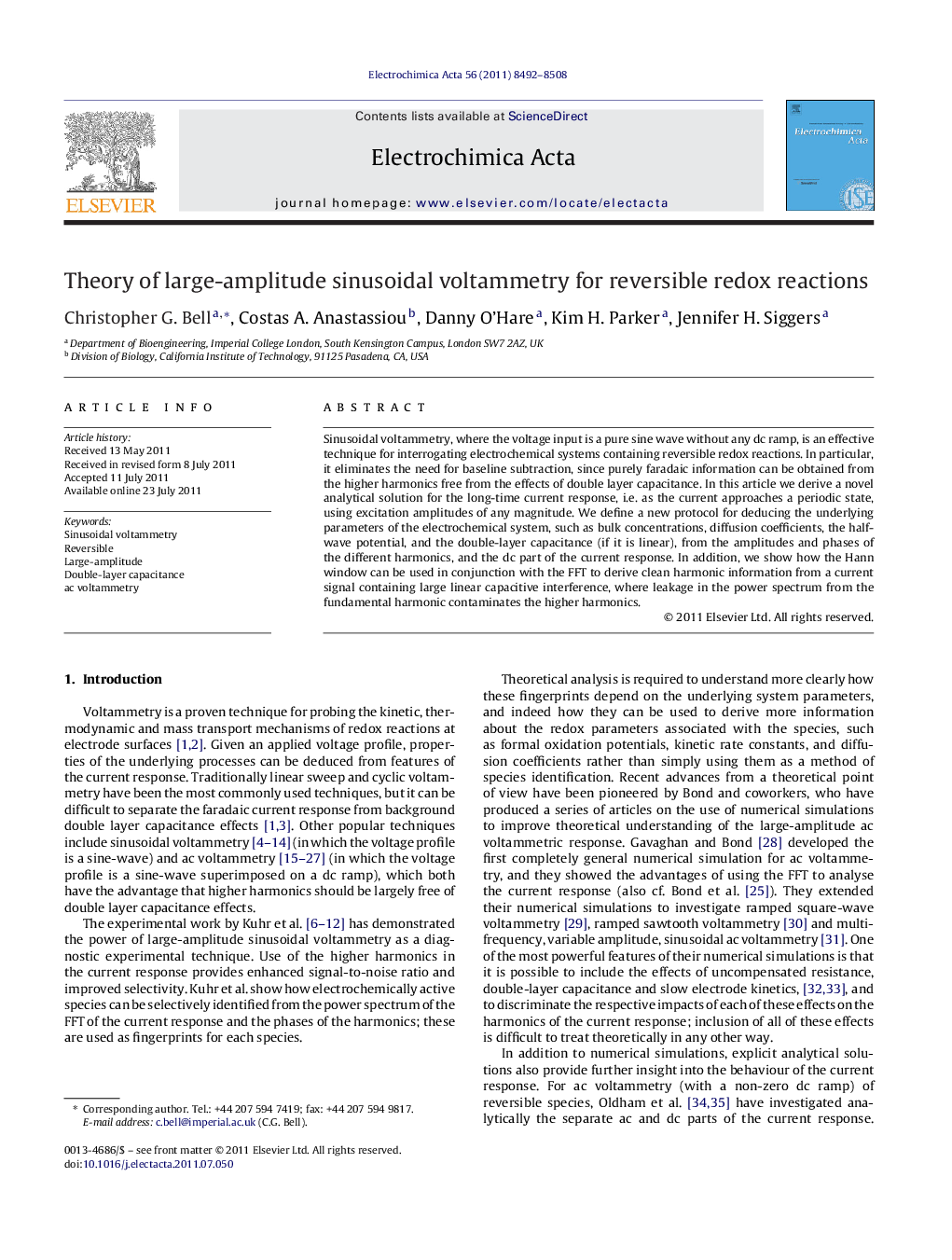| Article ID | Journal | Published Year | Pages | File Type |
|---|---|---|---|---|
| 189225 | Electrochimica Acta | 2011 | 17 Pages |
Sinusoidal voltammetry, where the voltage input is a pure sine wave without any dc ramp, is an effective technique for interrogating electrochemical systems containing reversible redox reactions. In particular, it eliminates the need for baseline subtraction, since purely faradaic information can be obtained from the higher harmonics free from the effects of double layer capacitance. In this article we derive a novel analytical solution for the long-time current response, i.e. as the current approaches a periodic state, using excitation amplitudes of any magnitude. We define a new protocol for deducing the underlying parameters of the electrochemical system, such as bulk concentrations, diffusion coefficients, the half-wave potential, and the double-layer capacitance (if it is linear), from the amplitudes and phases of the different harmonics, and the dc part of the current response. In addition, we show how the Hann window can be used in conjunction with the FFT to derive clean harmonic information from a current signal containing large linear capacitive interference, where leakage in the power spectrum from the fundamental harmonic contaminates the higher harmonics.
► Theoretical model for sinusoidal voltammetry applied to reversible redox systems. ► Analytical solution for the long-time current response, including harmonics. ► Valid for large-amplitude sinusoidal voltage excitations of any frequency. ► Hann window plus FFT effective when signal contaminated by large capacitance. ► Protocol for deducing system parameters from the harmonics and dc response.
